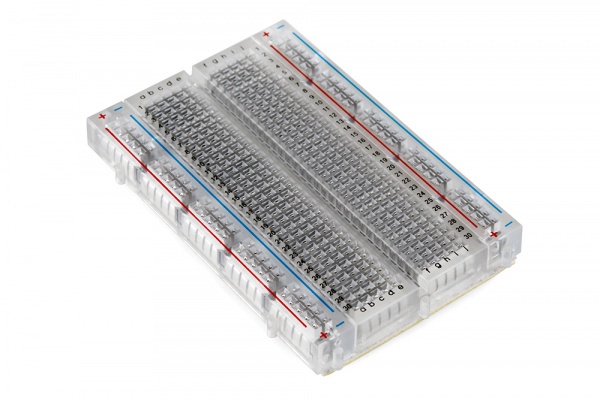Breadboards are essential tools when learning electronics or prototyping new designs. But what exactly are they? Let's take a closer look.
An electronics breadboard, or solderless breadboard, is great for making temporary circuits and prototyping. Because breadboards do not require any soldering to create a circuit, they are perfect for creating temporary designs or for testing out ideas quickly. They can also be reused over and over.

For these reasons, breadboards are included in many of our kits for the classroom, including the SparkFun Tinker Kit.
For those new to electronics, breadboards are often the best place to start. They allow users to create a wide range of circuits — from very simple to incredibly complex — without having to commit to a layout or use a soldering iron.

How do Breadboards Work?
When you first look at a breadboard, it may not seem that impressive; it’s basically just a piece of plastic with a bunch of holes in it. However, the magic lies within where a bunch of metal strips connect the rows of holes. These strips of metal have little clips that match up to the holes in the top of the breadboard and hold wires and components in place — as well as create electrical connections to anything else placed in the same row.
In addition to the horizontal rows, most breadboards feature vertical power rails that allow for easy access to power wherever it is needed within the circuit. Usually they will be labeled with a ‘+’ and a ‘-’ and have a red stripe and a blue or black stripe to indicate the positive and negative side.

For a deeper look at how breadboards work, check out our How to Use a Breadboard tutorial.




getting started, helpful information, What is a